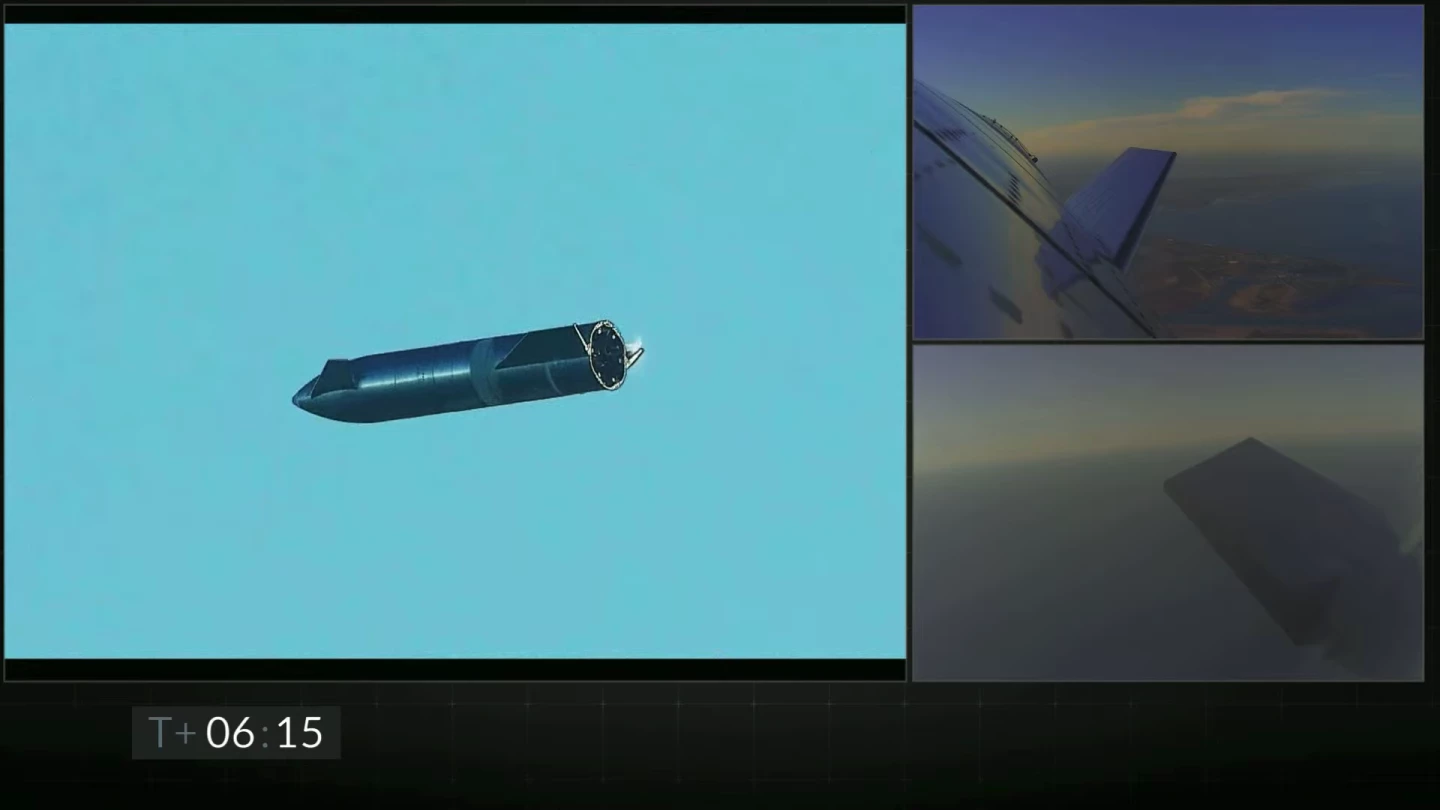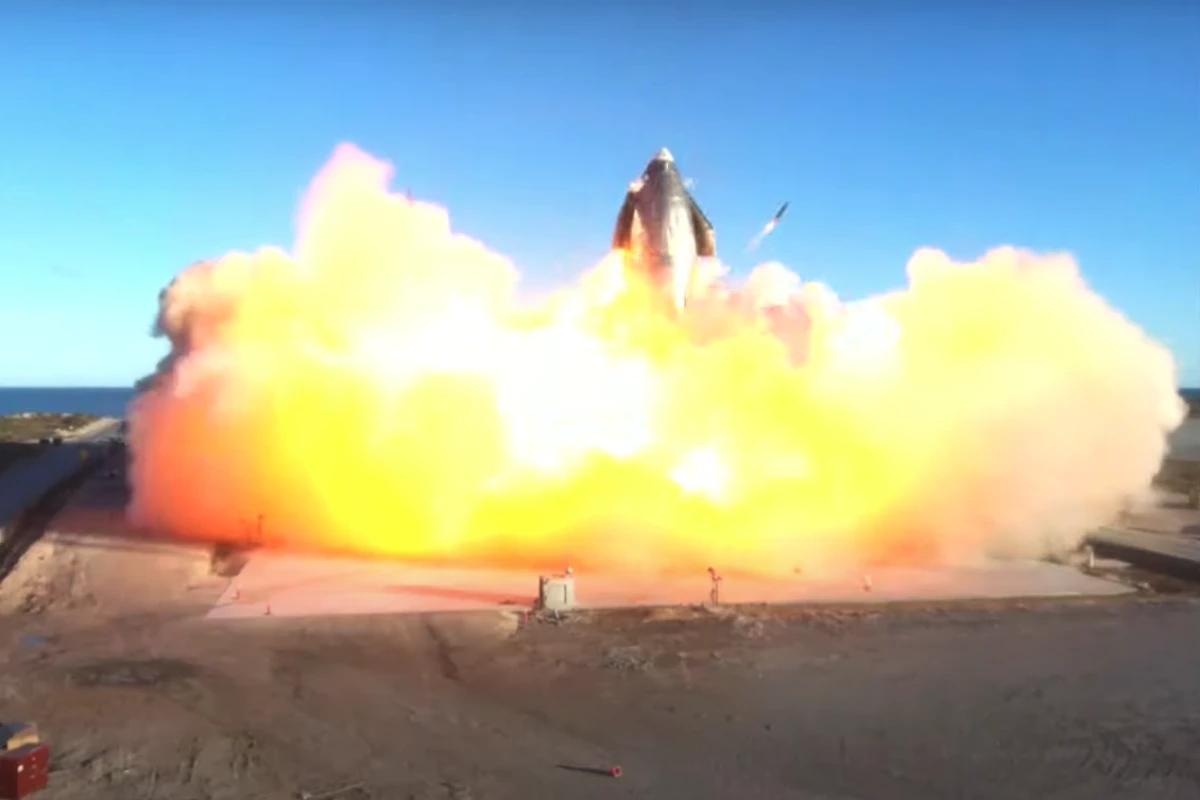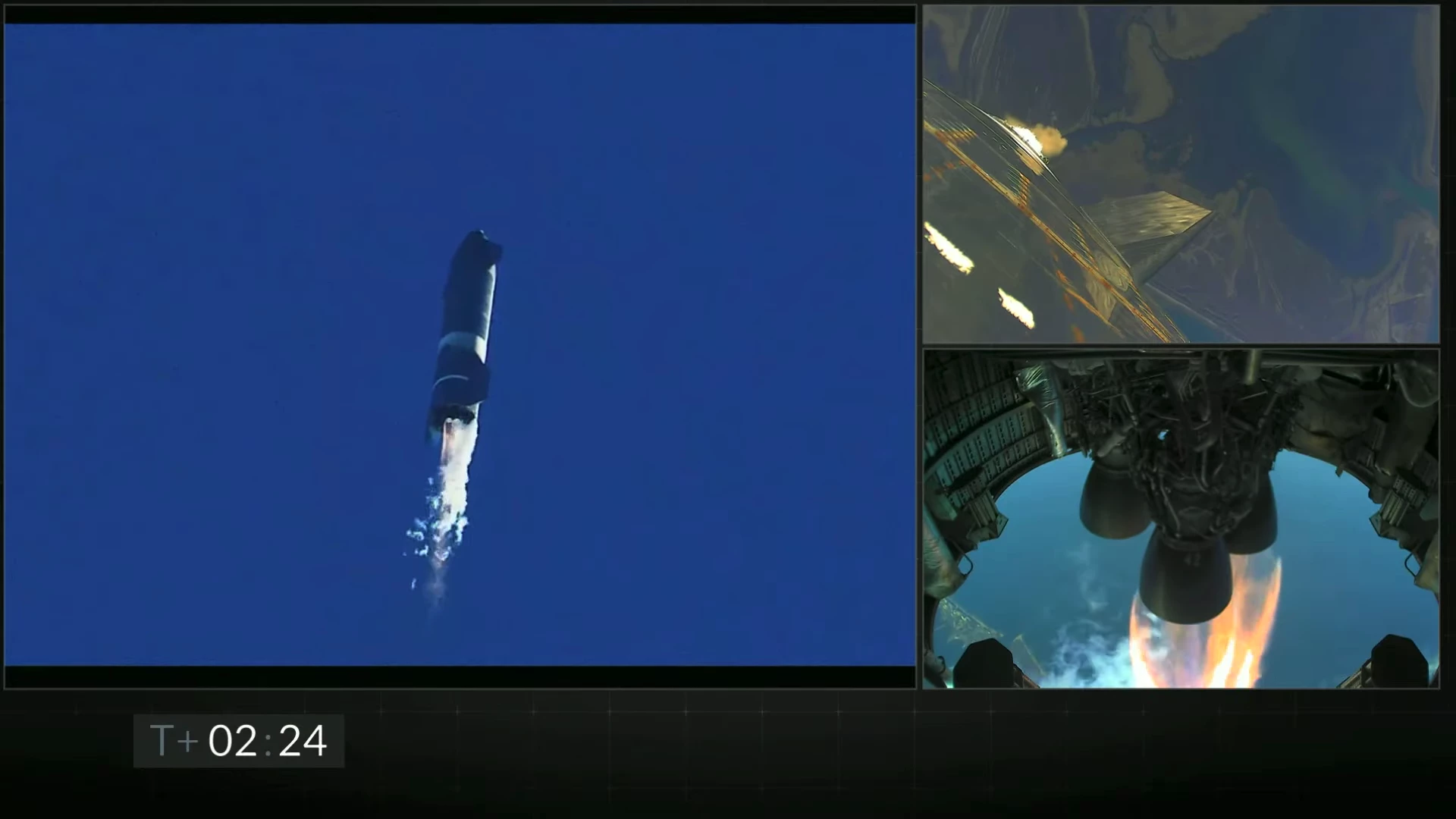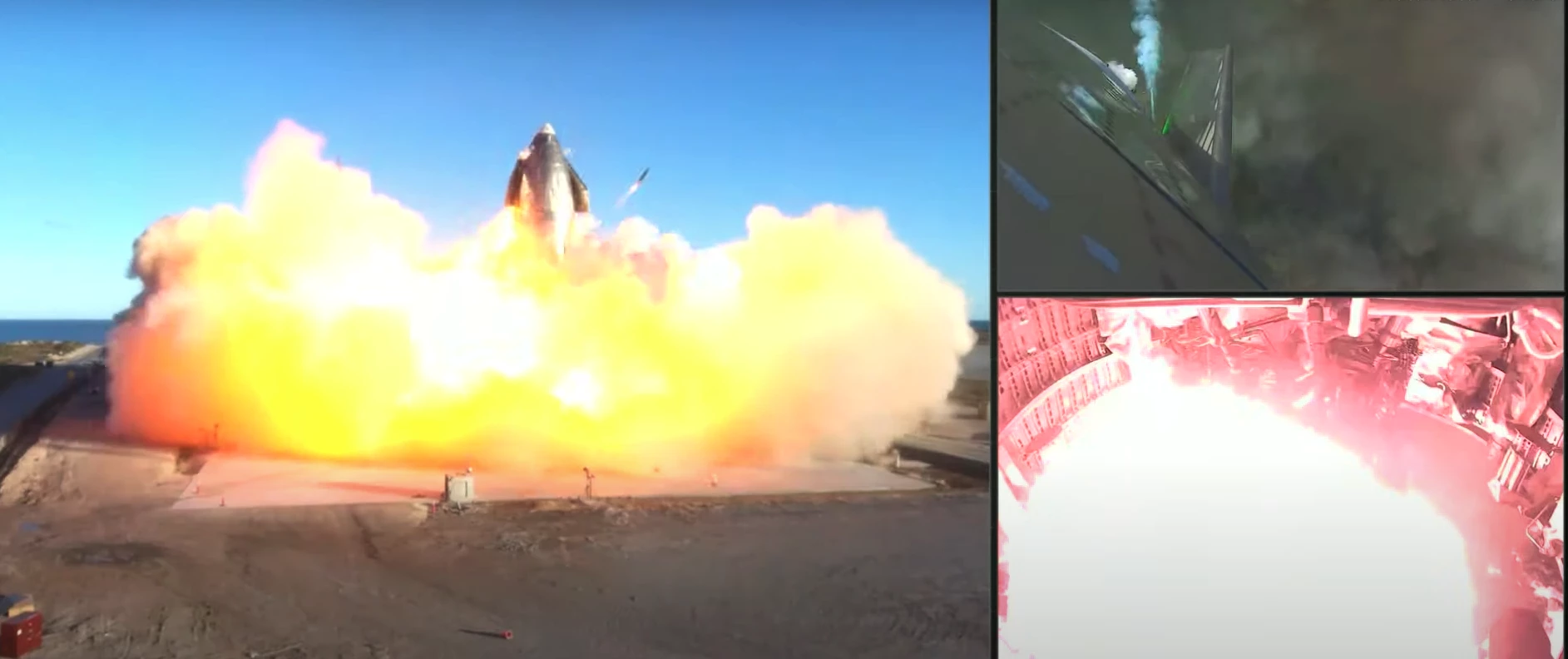SpaceX's Starship has reached magnificent new heights, today climbing to high altitude before exploding in a spectacular fireball during a landing attempt. The first sub-orbital flight for the SN8 prototype was nonetheless largely a successful one, with the massive vehicle designed for deep space travel achieving a few key objectives before its fiery demise.
The next-generation Starship is the vehicle SpaceX hopes to use to transport cargo and people to orbit, the Moon and eventually Mars. And the company's engineers have been rather proactive in iterating the design, quickly moving through the building and testing of prototypes, starting with the unveiling of the first version in January last year, to the 500-ft (150-m) hop test of SN5 a few months ago, to today's flight of SN8.

Inside the unfinished exterior are three of SpaceX's raptor engines, which today successfully blasted the SN8 prototype away from the company's Boca Chica test facility, and onwards to its highest altitude yet. The aim was to reach 40,000 ft (12,000 m), though it is not yet clear precisely the altitude SN8 was able to reach.
From there, the Starship performed a "landing flip maneuver", where it flipped 90 degrees and used its flaps to guide its path as it fell freely back to the Earth, much like a skydiver. This is the first time this maneuver has been attempted by a vehicle of this size, with SN8 then using its flaps to reorient itself to an upright position ahead of a landing attempt.

This part of the flight test didn't quite go to plan, and certainly not as smoothly as SpaceX's many successful landings of its Falcon 9 first stage, with the SN8 hitting the ground at seemingly high speed and resulting in a massive, fiery explosion.
Fuel header tank pressure was low during landing burn, causing touchdown velocity to be high & RUD, but we got all the data we needed! Congrats SpaceX team hell yeah!!
— Elon Musk (@elonmusk) December 9, 2020
CEO Elon Musk expanded on this via Twitter, describing the ascent as successful and saying the spacecraft demonstrated "precise flap control" during the landing attempt. Despite the explosive landing, the Starship program will continue at speed, with SpaceX claiming that SN9 is almost ready to be moved to the pad for its turn for take off.
Mars, here we come!!
— Elon Musk (@elonmusk) December 9, 2020
You can see the SN8 test flight in the video below.
Source: SpaceX







